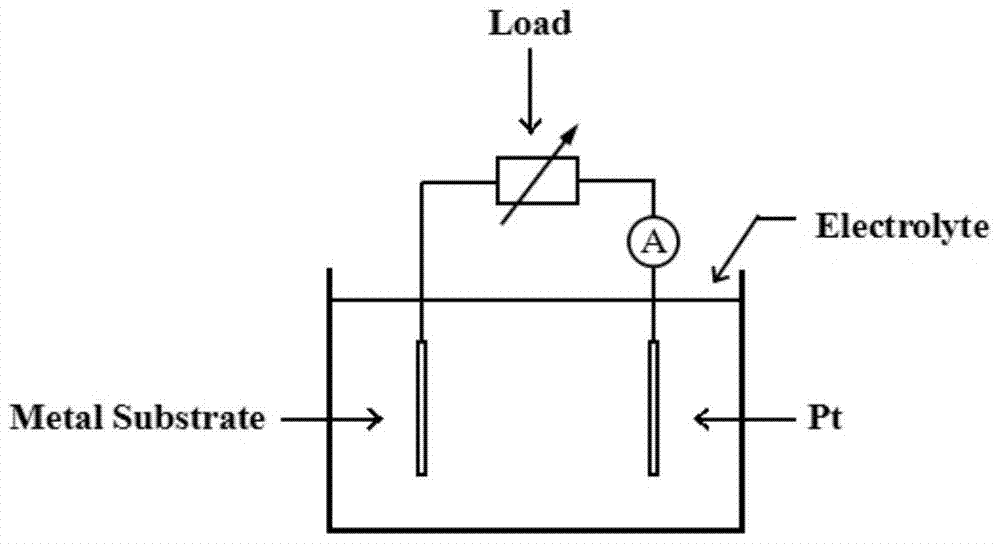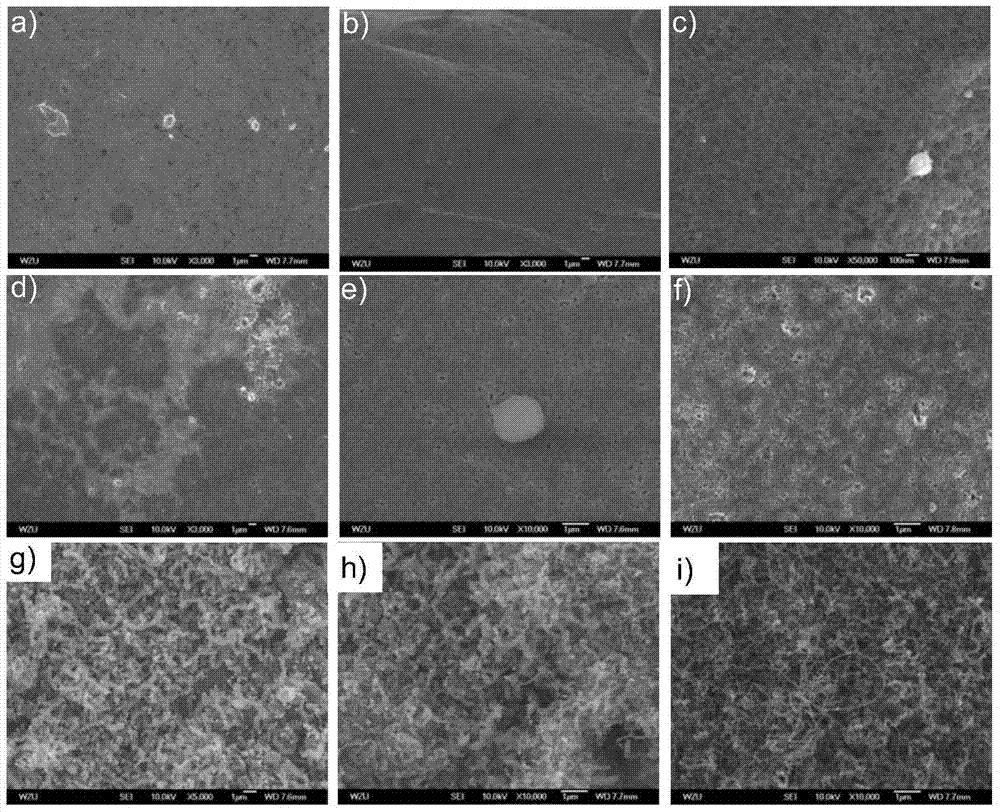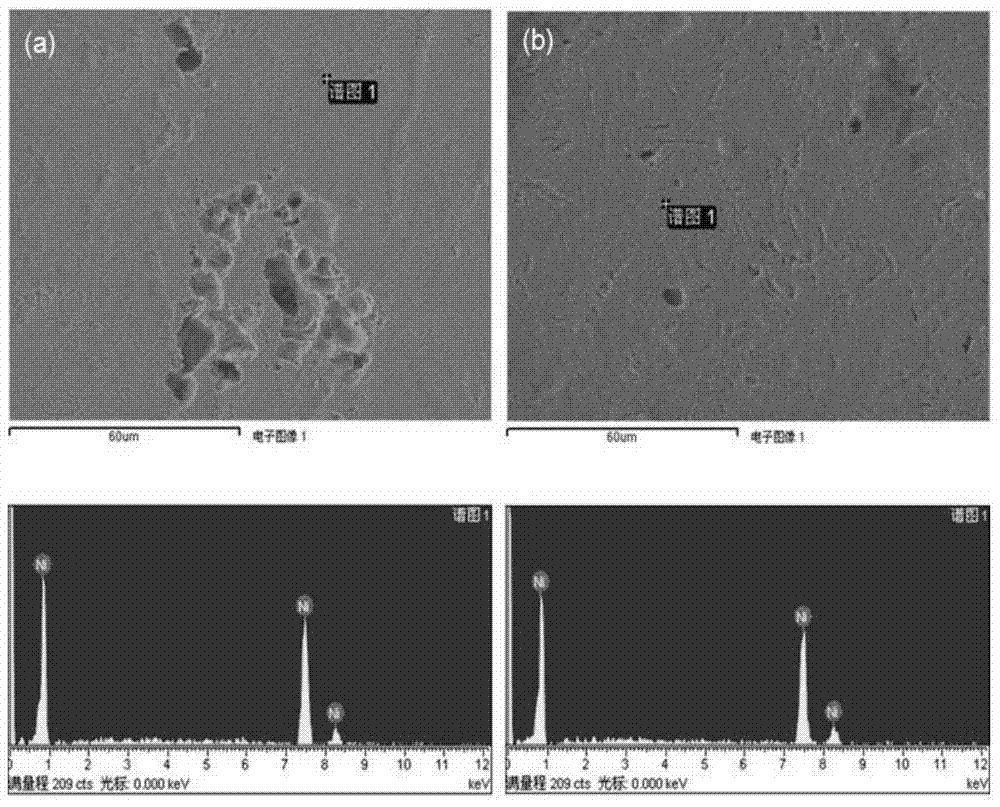A kind of anodization process of metal substrate for carbon nanotube growth
A metal substrate, carbon nanotube technology, applied in metal material coating process, anodizing, gaseous chemical plating and other directions, can solve uneven distribution, difficult to control the diameter of carbon nanotubes, increase the difficulty of strong adhesion of carbon nanotubes, etc. question
- Summary
- Abstract
- Description
- Claims
- Application Information
AI Technical Summary
Problems solved by technology
Method used
Image
Examples
Embodiment 1
[0026] Such as figure 1 Shown, the method for anodizing a metal substrate in an anodizing reaction device comprises the following steps:
[0027] (1) Ultrasonic cleaning is performed on the nickel-containing metal substrate. In this embodiment, the nickel-containing metal substrate is pure nickel;
[0028] (2) Anodize the nickel-containing metal substrate, choose an acidic solution with a concentration of 0.001mol / l, use the nickel-containing metal substrate as the positive electrode, use a corrosion-resistant conductor (Pt) as the negative electrode, and apply a fixed voltage of 1V between the two electrodes , for 1 minute, chemical and ultrasonic cleaning of the nickel-containing metal substrate after anodizing;
Embodiment 2
[0030] Such as figure 1 Shown, the method for anodizing a metal substrate in an anodizing reaction device comprises the following steps:
[0031] (1) Ultrasonic cleaning is performed on the nickel-containing metal substrate. In this embodiment, the nickel-containing metal substrate is stainless steel.
[0032] Anodize the nickel-containing metal substrate, choose an acidic solution with a concentration of 0.1mol / l, use the nickel-containing metal substrate as the positive electrode, choose a corrosion-resistant conductor (Pt) as the negative electrode, and apply a fixed voltage of 10V between the two electrodes for 10 Minutes, chemical and ultrasonic cleaning of nickel-containing metal substrates after anodizing;
Embodiment 3
[0034] Such as figure 1 Shown, the method for anodizing a metal substrate in an anodizing reaction device comprises the following steps:
[0035] (1) Ultrasonic cleaning is performed on the nickel-containing metal substrate. In this embodiment, the nickel-containing metal substrate is Hastelloy;
[0036] (2) Anodize the nickel-containing metal substrate, choose an acidic solution with a concentration of 1mol / l, use the nickel-containing metal substrate as the positive electrode, choose a corrosion-resistant conductor (Pt) as the negative electrode, and apply a fixed voltage of 100V between the two electrodes. Lasting for 100 minutes, chemical and ultrasonic cleaning of the nickel-containing metal substrate after anodizing;
PUM
 Login to View More
Login to View More Abstract
Description
Claims
Application Information
 Login to View More
Login to View More - R&D
- Intellectual Property
- Life Sciences
- Materials
- Tech Scout
- Unparalleled Data Quality
- Higher Quality Content
- 60% Fewer Hallucinations
Browse by: Latest US Patents, China's latest patents, Technical Efficacy Thesaurus, Application Domain, Technology Topic, Popular Technical Reports.
© 2025 PatSnap. All rights reserved.Legal|Privacy policy|Modern Slavery Act Transparency Statement|Sitemap|About US| Contact US: help@patsnap.com



